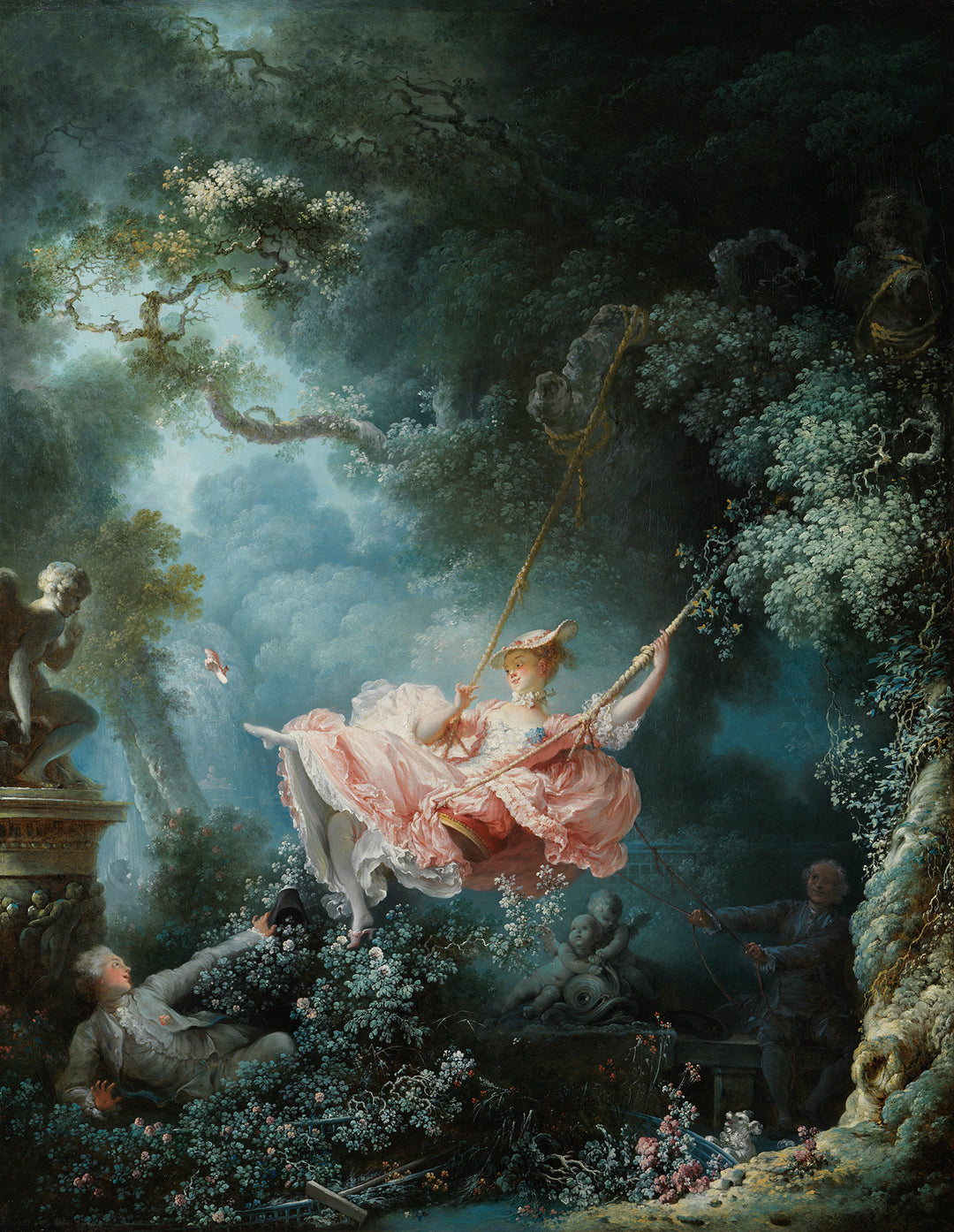
Rococo
Rococo was an artistic movement that developed in France during the first half of the eighteenth century as an evolution of the late Baroque toward more intimate, decorative, and playful forms. Influenced by the theatrical opulence of the Baroque, this groundbreaking artistic current softened its drama and embraced an aesthetic rooted in grace, hedonism, and courtly escapism. Unlike their predecessors, Rococo painters moved the scene of power away from religious or monarchical spaces to private settings, particularly aristocratic salons and refined garden fêtes.
One of the leading exponents of the movement was Jean-Honoré Fragonard, whose painting "The Swing" (Les Hasards heureux de l’escarpolette) perfectly encapsulates the thematic lightness and subtle eroticism characteristic of the style. François Boucher, another key figure, filled his canvases with sensual nymphs, rosy skies, and theatrical settings that exalted decoration over moral content. Antoine Watteau, with his invention of the "fête galante", introduced a nostalgic vision of love and melancholy in compositions that seamlessly blended the theatrical with the pastoral.
Although it was harshly criticized after the French Revolution for its perceived frivolity, Rococo profoundly influenced both early Romanticism and nineteenth-century Symbolism, particularly in their emotional use of color and the idealization of the feminine figure. Its legacy can also be traced in modern decorative design and in movements such as Art Nouveau (Modernism), which revived its emphasis on curvature, ornamentation, and sensual beauty. Far from being a superficial art form, Rococo represented an aesthetic response to the rigidity of official Baroque art, offering an alternative vision of pleasure, desire, and nature through painting.
